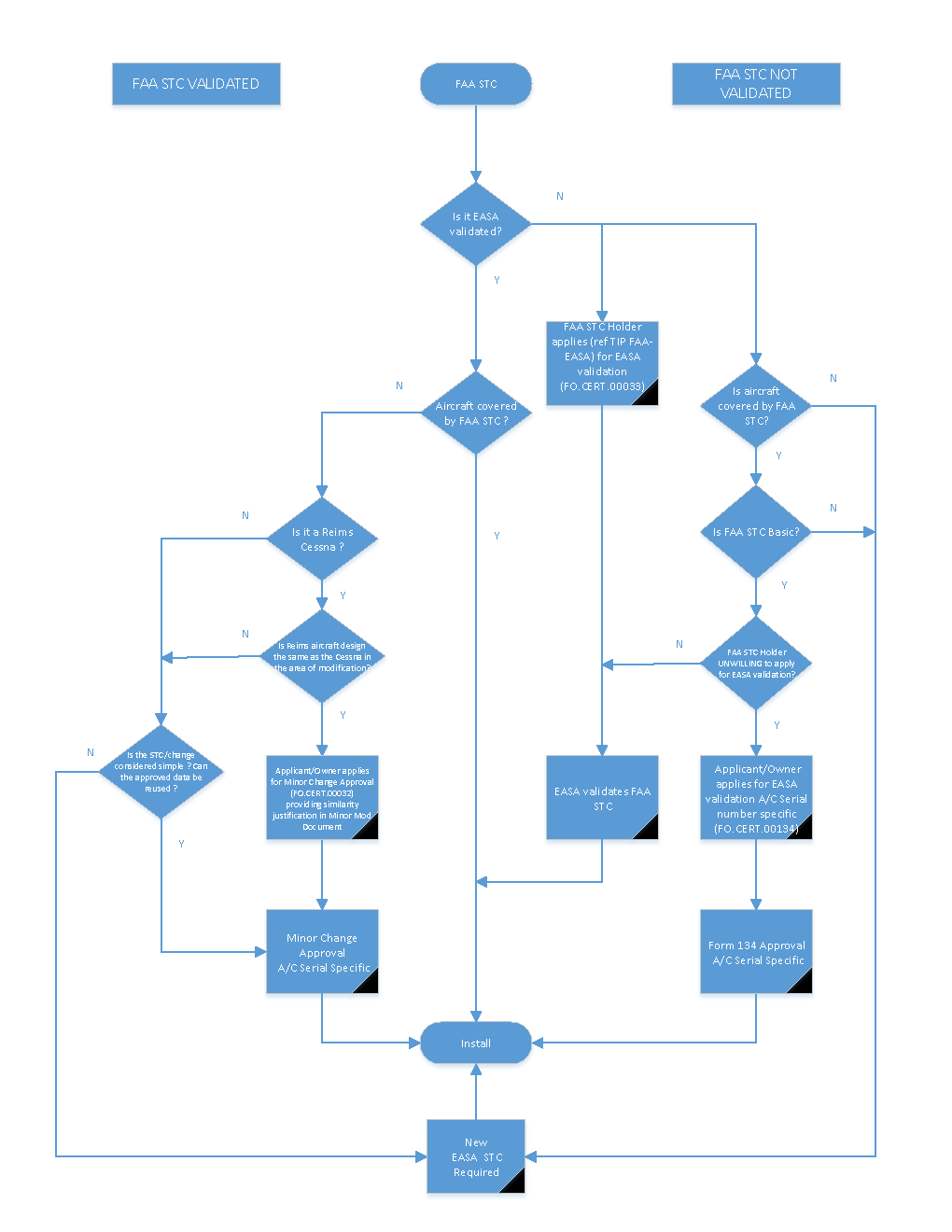How does EASA deal with STCs on Reims-built Cessna models?
STCs approved on US-built Cessnas and their applicability to Reims-Cessna models.
Reims-Cessna was a French company that manufactured US-designed Cessna aircraft under licence. These included the F150, F152, F172, F177, F182, F337, F406 and their variants. These aircraft were identical to the US-built aircraft but the French aircraft were given DGAC Type Certificates. For this reason, FAA STCs approved for US-built Cessna models do not formally apply to Reims-Cessna models; this also applies to validated STCs. However, because the Reims-Cessna aircraft are identical to the US-built aircraft, and because there is no technical investigation necessary to extend the applicability of STCs to the French-built aircraft, EASA can extend the grandfathered approval to Reims-built aircraft but the approval has to be legally recorded. The mechanism that is used is the minor change, even if the modification would normally be classified as STC (ie, a major change). The applicant should apply on an EASA Form 32 referring to the FAA STC and its EASA grandfathered approval in the application.
Note that all Reims-Cessna models are now covered under FAA Type Certificates, with the exception of the FTB337G and GA which are covered by EASA SAS and the F406, which is still the responsibility of Reims Aviation Industries (RAI).
How does EASA deal with Applicable Model Lists?
In general, an STC can apply to only one Type Certificate. Certain exceptions can be made where the installation of a piece of simple equipment is clearly identical from one aircraft type to another, but EASA procedures state that an STC should apply to one TC only. Each new TC should be the subject of a new application.
This principle also applies to the validation of FAA STCs.
My aircraft has been modified in the USA by Form 337 action. Can EASA accept this?
EASA accepts alterations on non-critical components that are substantiated via Form 337, as detailed in the EASA-FAA Technical Implementation Procedure (TIP) rev 5, paragraph 3.2.8.2 EASA Acceptance of FAA Alteration Data:
“Except for alterations on critical components, FAA-approved or accepted alterations per 14 CFR Part 43 installed on a used aircraft exported from the U.S., regardless of the State of Design of the aircraft, are considered approved by EASA at the time of import to the European Union. EASA shall accept such FAA alteration data when substantiated via an appropriately executed FAA Form 8110-3, FAA Form 8100-9, FAA Form 337 or logbook entry.
Alterations on critical components must be EASA-approved via STC, in accordance with TIP paragraph 2.2 (Design Approval Procedures for Supplemental Type Certificates (STCs)).
An FAA STC whose installation is documented on a Form 337 must be approved by EASA in accordance with TIP paragraph 2.2.”
How do I apply for an STC approval?
Application for STCs are made using the specific form available in the Application forms page.
Applications can be of two types:
- An application from an EU organization for the EASA approval of a new STC.
This requires that the applicant has obtained a Design Organisation Approval (DOA) or Alternative Procedures (AP to DOA). For ELA 1 aircraft or for an engine or propeller installed in ELA1 aircraft an applicant may submit a certification programme for the Agency’s acceptance, in accordance with Regulation (EU) 748/2012 Point 21.A.14(c).
- An application from a non-EU organization for the EASA validation of a non-EU STC.
The application must be made in accordance with a Working Arrangement or Bilateral Agreement.
For example, in the case of STCs issued by the FAA, in accordance with the Technical Implementation Procedure (TIP) between the FAA and EASA, the FAA STC holder must make the application via the FAA Aircraft Certification Office (ACO) that issued the original approval. The ACO must provide a covering letter endorsing and classifying the application (Basic or non-Basic) and forward it to EASA. Applications where EASA agrees with the classification as 'Basic' are normally dealt with quickly.
